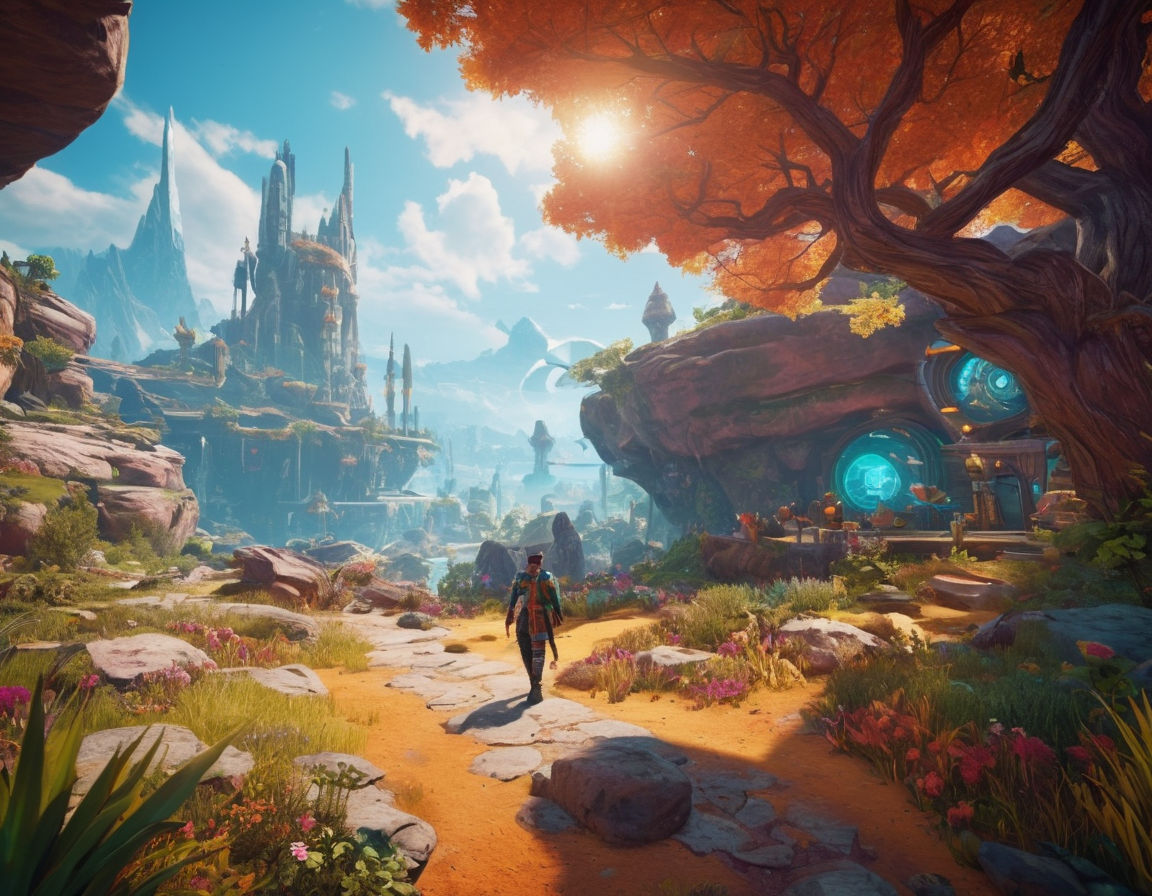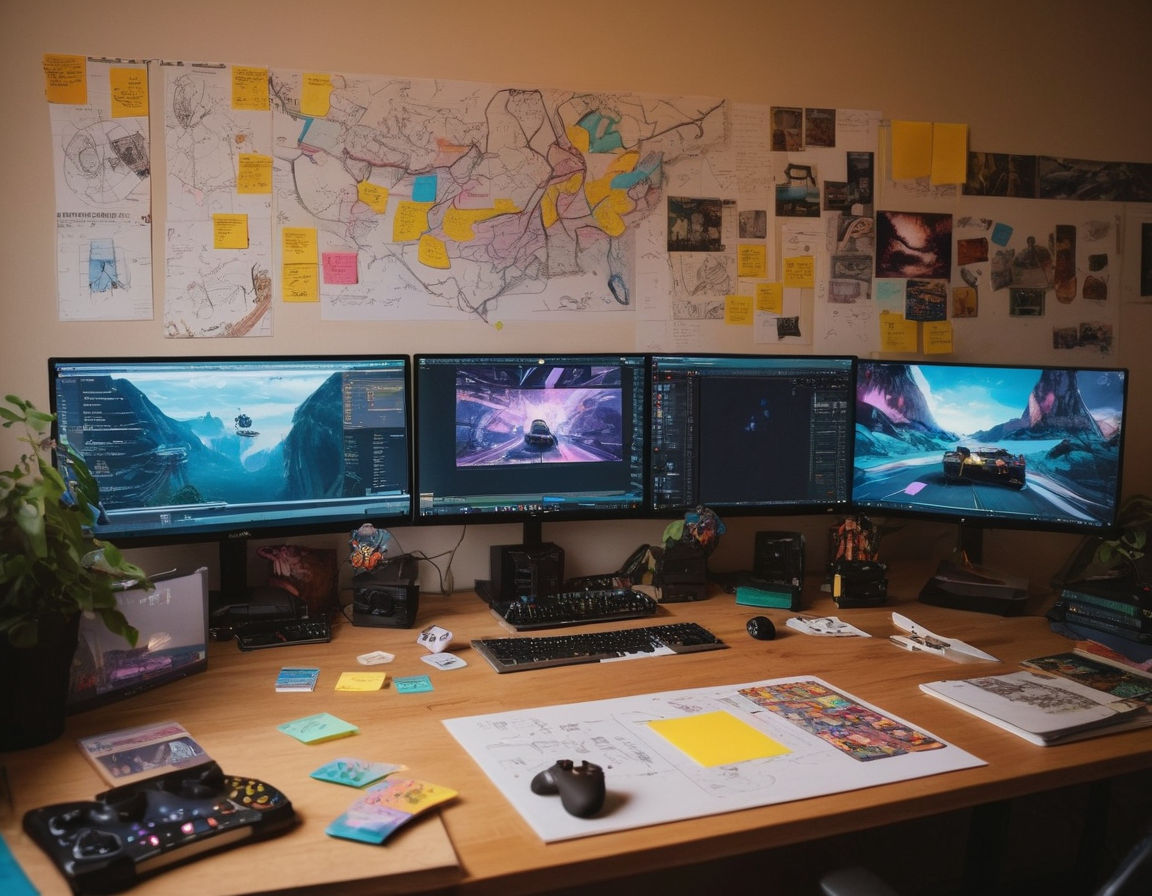Introduction
Indie Game Developers have significantly impacted the gaming industry, revolutionizing it with their innovative and unique approaches. These game developers, often working on smaller budgets and teams, have crafted groundbreaking titles that have captured the attention of gamers worldwide. Their creativity and boundary-pushing concepts have challenged the status quo in the gaming world, bringing fresh perspectives to the industry.
The Importance of Indie Game Developers in the gaming industry cannot be overstated. These developers have introduced a level of creativity and originality that might not always be found in larger game development companies. They often take risks, experiment with new ideas, and create games that resonate with niche audiences, leading to a more diverse and varied gaming landscape.
Thesis Statement: Indie Game Developers have transformed the gaming industry by pushing boundaries, introducing fresh game design concepts, and contributing to the overall diversity of gaming experiences available to players around the world.
The Origins of Indie Game Developers
In the early days of gaming, Indie Game Developers were often individuals or small teams working on passion projects without the backing of major publishers. The Historical background of indie game development can be traced back to the rise of personal computers and the democratization of game development tools. Early indie developers faced significant challenges, including limited resources, lack of recognition, and distribution hurdles.
Despite these challenges, the Growth of indie development has been remarkable. Indie developers have carved out their space alongside mainstream gaming by leveraging digital distribution platforms, social media, and crowdfunding to reach players directly. This direct connection with the audience has allowed indie developers to thrive and innovate, creating games that resonate with players on a more personal level.
Early Challenges Faced by Indie Developers:
Limited access to funding and resources.
Struggles with visibility and marketing.
Distribution challenges in a competitive market.
Impact on the Gaming Industry
Indie games have had a profound Influence on game design trends, inspiring mainstream developers to think outside the box and explore new gameplay mechanics and storytelling techniques. The fresh perspectives brought by indie developers have pushed the boundaries of what can be achieved in game design, leading to more experimental and diverse gaming experiences.
The Market Impact and Disruption caused by indie developers cannot be overlooked. Indie games have shaken up the industry by showcasing that successful games do not always require massive budgets or large development teams. This has led to a reevaluation of the traditional gaming market, with players and developers alike embracing the variety and innovation that indie games bring to the table.
Comparison between Indie Games and AAA Titles:
Indie games often focus on unique storytelling and gameplay mechanics.
AAA titles typically have larger budgets and resources for development.
Indie games have the freedom to take creative risks and explore niche concepts.
By understanding the Origins of Indie Game Developers and their Impact on the Gaming Industry, it becomes clear that indie developers play a crucial role in shaping the future of gaming, introducing fresh ideas, and pushing the boundaries of what is possible in game design.
Innovative Game Design in Indie Games
In the realm of Indie Game Developers, innovation in game design is a defining characteristic. These developers often venture into uncharted territory, exploring unique game mechanics that challenge traditional norms and captivate players in new ways.

Exploration of unique game mechanics in indie titles
Narrative-driven Gameplay: Indie games often prioritize storytelling and character development, offering immersive experiences that delve deep into emotions and themes not commonly explored in mainstream games.
Artistic Aesthetics: Visual artistry plays a significant role in indie games, with developers leveraging distinct art styles to create visually striking and memorable worlds.
Gameplay Mechanics: Indie developers frequently experiment with gameplay mechanics, introducing novel concepts that redefine player interactions and puzzle-solving mechanics.
Examples of boundary-pushing indie games
"Celeste": This indie platformer blends tight controls with a poignant narrative, tackling themes of mental health and self-discovery.
"Hades": Combining roguelike elements with a compelling story, this game showcases how indies can innovate within established genres.
"Undertale": Known for its unconventional storytelling and moral choices, this game demonstrates how indie developers can create impactful narratives.
How indie developers bring fresh ideas to the industry
Indie developers often operate without the constraints of large corporations, allowing them the freedom to take creative risks and explore unconventional ideas. This freedom fosters an environment where innovation thrives, leading to the creation of groundbreaking games that push boundaries and inspire mainstream developers.
Overcoming Challenges
Despite their creative freedom, Indie Game Developers face a myriad of challenges on their game development journey, ranging from financial struggles to balancing creative vision with commercial viability.
Discussion of common challenges faced by indie game developers
Limited Resources: Indie developers often have small teams and budgets, making it challenging to compete with larger studios in terms of production value and marketing.
Visibility: Standing out in a crowded market is a constant struggle for indie developers, as getting noticed among a sea of games requires effective marketing strategies and visibility.
Time Constraints: Balancing development time with the need to release a game can be stressful, leading to burnout and compromised quality.
Strategies for funding indie game projects
Crowdfunding: Platforms like Kickstarter and IndieGoGo have been instrumental in helping indie developers secure funding for their projects by directly reaching out to their target audience.
Grants and Contests: Many organizations and game development competitions offer grants and funding opportunities to support indie developers in bringing their creative visions to life.
Publisher Partnerships: Collaborating with publishers can provide indie developers with financial support, marketing resources, and valuable industry connections.
Balancing creativity with financial constraints
Indie developers often find themselves walking a fine line between pursuing their artistic vision and ensuring their game is financially sustainable. Navigating these challenges requires a blend of creativity, strategic planning, and a deep understanding of the target audience's expectations.
The Indie Game Development Community
The Indie Game Development Community plays a crucial role in supporting and nurturing talent within the industry. Through events like game festivals and a culture of collaboration, indie developers find a sense of belonging and empowerment in their creative pursuits.
Role of game festivals in showcasing indie titles

Visibility: Game festivals provide indie developers with a platform to showcase their games to a global audience, gaining exposure and attracting potential players and investors.
Networking: These events create opportunities for developers to connect with industry professionals, media, and fellow creators, fostering collaboration and knowledge sharing.
Feedback and Recognition: Participating in game festivals allows developers to receive valuable feedback from players and industry experts, helping them refine their games and build a loyal fan base.
Support and collaboration within the indie game development community
The indie game development community thrives on mutual support, with developers often sharing resources, knowledge, and experiences to elevate the collective creativity of the industry. Collaborative efforts lead to the growth of indie games as a whole, fostering a sense of unity and camaraderie among developers.
Developer stories highlighting perseverance and success
Behind every indie game success story lies a journey of perseverance, resilience, and unwavering passion. Stories of indie developers overcoming obstacles, defying odds, and triumphing against challenges serve as inspiring testaments to the indomitable spirit of the indie game development community.
Future Trends and Opportunities
Indie game developers have been at the forefront of driving innovation in the gaming industry, constantly pushing boundaries and redefining what gaming can be. As we look towards the future, several emerging trends are shaping the landscape for indie game development.
Emerging trends in indie game development
Diverse Storytelling: Indie developers are increasingly focusing on unique storytelling techniques, diverse narratives, and immersive experiences that resonate with players on a deeper level. Titles like "Hades" and "Cuphead" have gained critical acclaim for their innovative storytelling approaches.
Cross-platform Accessibility: With the rise of cloud gaming and advancements in technology, indie developers are exploring ways to make their games accessible across multiple platforms. This ensures a wider reach for their creations and the ability to cater to different types of gamers.
Emphasis on Player Engagement: Indie developers are prioritizing player engagement by incorporating elements like player choice, interactivity, and community involvement. Games like "Among Us" have demonstrated the power of player interaction and engagement in shaping the gaming experience.
Potential growth areas for indie developers
Virtual Reality (VR) and Augmented Reality (AR): Indie developers are increasingly venturing into the realm of VR and AR, creating immersive and interactive experiences that leverage the capabilities of these technologies. This presents a significant growth area for indie developers to explore new possibilities in gaming.
Mobile Gaming: The mobile gaming market continues to expand, providing indie developers with a platform to reach a vast audience of players. With the right marketing strategies and innovative gameplay mechanics, indie developers can tap into the potential growth of mobile gaming.
Live Service Games: The trend towards live service games, which offer continuous updates and new content to players, presents an opportunity for indie developers to engage with their player base over an extended period. By adopting a live service model, indie developers can create sustainable and evolving gaming experiences.
The evolving relationship between indie and mainstream gaming
Indie game developers have challenged the traditional boundaries between indie and mainstream gaming, blurring the lines and creating a more inclusive gaming ecosystem. The collaboration between indie studios and larger publishers has led to the creation of successful titles that combine innovation with resources from mainstream studios.
Indie games are now being recognized for their unique art styles, innovative gameplay mechanics, and compelling narratives, attracting a growing audience of players who appreciate the creativity and individuality of indie creations. As indie and mainstream gaming continue to converge, we can expect to see more cross-pollination of ideas, talent, and resources, leading to a richer and more diverse gaming industry.
Conclusion
In conclusion, the impact of indie game developers on the gaming industry cannot be overstated. Through their creativity, passion, and vision, indie developers have brought about a renaissance in gaming, challenging conventions and inspiring change. As we look to the future of indie gaming, it is clear that indie developers will continue to drive innovation, explore new horizons, and captivate players with their unique offerings.
In the ever-evolving landscape of gaming, indie developers stand as pioneers of creativity and ingenuity, shaping the future of the industry one game at a time. As players, enthusiasts, and supporters of indie gaming, it is essential to recognize and celebrate the contributions of indie developers and champion their work.

Call to action: Embrace the world of indie gaming, support indie developers, and discover the next groundbreaking title that could redefine your gaming experience. Join the community, explore new horizons, and be part of the journey towards a more diverse and innovative gaming industry.



